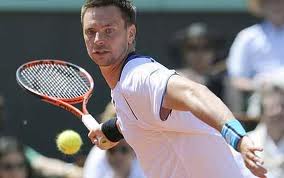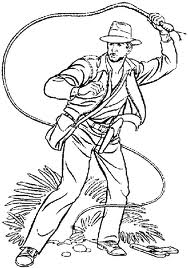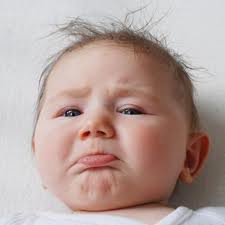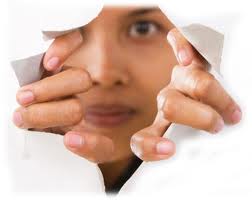Seasonal reflection
A real reflection on your current situation needs a pause, and give good distance to what you otherwise do. When you're too close to the middle of battle, a reflection is very much tempered by what you're currently involved in, or what is just round the corner.
The off season for professional players lasts from mid November to Christmas, a good six weeks without a tournament. This seems excessive, certainly excessive for a forced break. If you choose to pause, you'd probably take six weeks as being optimal. What is difficult is that the paying public have no tennis at all for six weeks, on the TV in the papers, nothing. This November/December pause has become even deeper in recent years, as players have complained about burn-out, and this seems to be the only time of the year when the ATP calendar can give a break to the players.

Time for a reflection pause
The Challenger circuit does continue right up until Christmas however, so if you were desperate for tennis, you could find some here. It is a great shame that the TV companies don't take this opportunity to show some lower grade tennis. This would give us a better perspective on levels, give us almost as much entertainment, and expose us to some new and old faces plying their trade in off season.
Of course there is no reason why a player should pause at this time. In fact a certain type of player, for instance an out and out clay courter, may not have done much at all since the end of the US season in mid September, and the tour goes indoor for a few weeks, where many of the tournaments become sparring grounds for players vying for qualification for the ATP Finals. To force a player to pause may fall exactly at the WRONG time of year for him. A clay courter will of course play in Australia in January, but as soon as that is over he'll be off to South America for the first clay events.

Big wind-up
The pause this year is quite poignant for one man, Robin Soderling. He was a high achiever a couple of years ago, a confirmed top ten player, and none of the Big Three, as they were then, liked playing him. He'd even beaten Nadal on clay at his favourite event.
But then a viral condition was discovered, a fatigue-causing ailment, that has side-lined him for eighteen months. Having a player cut down just as he was peaking is a real tragedy, but maybe the more so since it concerns a player who has had a partiularly interesting stop/start rise up the rankings, and who has a distinctive playing style that is definitely good on the eye. Now he's been absent, our reflection is the more stronger.
You'd never call Soderling a great technician. His serve has edges and blips, defintely not the smoothness of Federer or Djokovic. He also has an odd contact, frequently, preferably, using a flat face on the ball. This is very passé, but very effective, even on clay.

Throw action
His forehand, a confirmed big shot, is a very Swedish shot. I remember a player in the Lendl years, Magnus Gustafsson who had a similar shot, a totally exaggerated back lift, letting the racket go back far beyond a comfortable loop. The racket gets thrown out behind the back like you'd poise a whip, combined with sledgehammer. By the time the racket gets to contact it has travelled a wide long distance, and is getting dangerously away from the body. There's a feeling that the forehand is all racket and no body. But it is a spectacular forehand. I liked the Gustaffson forehand too. By getting away from the pure, modern "shoulder-turn " forehand, you are entering a new area. The trajectories are different, the spins too, and that means that Soderling typically got better angles, more power, more spin, more height, more ,more. This is a shot that, mechanically speaking, is not always easy to control, but allows the exponent a maximum of variety.
Soderling is blessed also with one conventional shot, his backhand, and this is a technical delight. This is as good a two-hander as you'll find, with simple shoulder turn, and wonderful repetition. An effortless shot. Soderling, not having great spins and variety on his serve, and in principle being really a "power" baseliner, has never really been a volleyer, but he can volley.

Cry Baby
Soderling was a desperate under-achiever in his early career. His biggest problem was his temperament, the biggest of babies on the court, blaming everyone else but himself. He then went away - for a big reflection.
Then came a lucky moment in his life. He hired Magnus Norman as coach, not only a landsman, but he himself fresh off the ATP circuit, and with a great pro career behind him. Norman was a typical Swede with great temperament, and he gave all of that to Soderling. And Soderling learned it all. This sounds like an inevitability, but far from it. Teaching an old dog new tricks is practically impossible, but Soderling applied himself, and learned. For me, one of the great achievements in tennis what these two achieved. Amazingly, Soderling ended up by having one of the strongest minds on tour. Wow!
The real interest here is that Soderling is on an 18 month illness pause. He is sorely missed from the tour, a real asset to the game. And when his colleague pros are off on their Christmas break, here he is talking about getting back to the tour in the New Year. I wish and hope he'll make it, but will he be the same as before?
Soderling himself isn't sure. He's talking about already having had a fantastic career, having no regrets. If his illness is to indeed cut him off in his prime, then so be it. He can live with that. But what about me? I wanted more of Soderling. We deserve, he deserved, to give us more.
Time for reflection - a quiz!
Have A Great Story About This Topic?
Do you have a great story about this? Share it!
Five of our most popular pages
. tournament win
. finding a sponsor
. the touring pro
. the master at work




